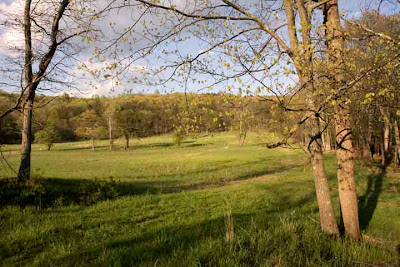
Today was an exceptional day for photographing whitetail fawns with excellent encounters in both the morning and evening.
I got the Canon 40D back from repair yesterday afternoon. According to the repair report: They replaced the shutter assembly, cover assembly top and window display, adjusted exposure and focus, cleaned C-mos to factory specs. Updated the firmware. Checked all.
At first all seemed well as I put the camera through its' paces, but then I mounted it on the 500mm F4 and tripod. In this case, I prefer to use a cabled remote release to fire the camera.
I attached the release, pressed the button and there was no response. A quick trial on the 30D confirmed the release was working. Just to double check, I borrowed Salty's release and tried it with the 40D with the same results.
Bottom line, about two weeks without the camera and I'm still not home free, so it turned out it was a wise decision to buy the 30D for a backup camera. To be truthful I like the 30D so much that I feel no loss at being without the 40D. I just hate the hassle of prepping it for repair again.
I do miss the larger and brighter LCD display of the 40D and the fact that it displays the ISO setting in the finder at all times, but when it comes to overall ease of operation and picture quality I still think the 30D is a formidable contender.
The fawns are spending less time hiding now and are traveling about grazing more, so they are easier to see than a few weeks ago. They have also gotten much larger.
After photographing fawns this morning, I spent some time in the wildlife meadow with the 500mm lens and a short extension tube, to enable it to focus closer. I was mostly looking for butterflies and did have some success, but I was excited to get my first decent capture of a Hummingbird Moth.
 Hummingbird Clearwing Moth: Canon 30D-500mm F4 1/6400 sec. f5.6 ISO 200
Hummingbird Clearwing Moth: Canon 30D-500mm F4 1/6400 sec. f5.6 ISO 200These moths are easily confused with a hummingbird from a distance as their flight pattern is much the same.
For more camera critters photos, visit Misty Dawn.
For more camera critters photos, visit Misty Dawn.










